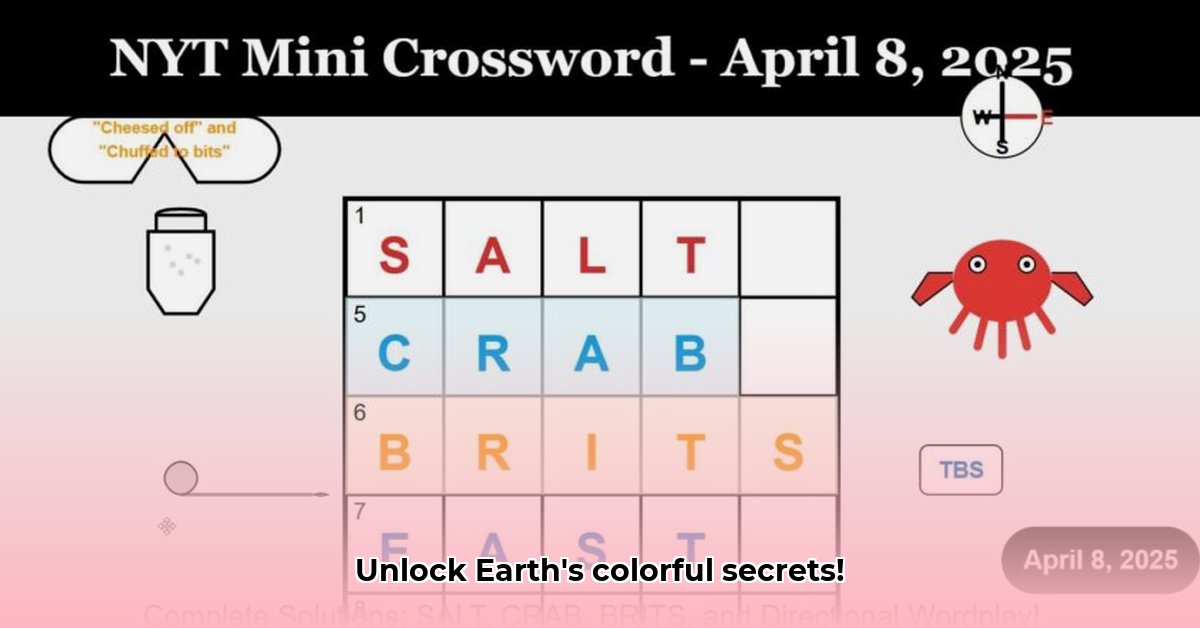
Ever stared blankly at a crossword clue simply stating "Colorful Rock"? While seemingly straightforward, this clue unveils a surprisingly complex geological landscape. This article explores the frequency of various colorful rock solutions, the challenges of using Natural Language Processing (NLP) to solve such clues, and the potential for collaboration between geologists and crossword constructors to improve the accuracy and engagement of these puzzles. For more examples of brightly colored rocks, see this helpful resource: Brightly Colored Rocks.
The Agate Advantage: A Frequent Winner
"Agate" frequently emerges as the first answer for "Colorful Rock" clues. Its brevity, familiarity, and accurate description make it a crossword constructor's favorite. However, this common association raises a key question: How often is "agate" actually the solution, and what other possibilities exist? Let's move beyond this common answer and delve into the fascinating diversity of colorful rocks.
Beyond Agate: A Spectrum of Geological Solutions
The "Colorful Rock" clue is a geological treasure trove, containing a rainbow of possibilities. Jaspers, with their vibrant reds and yellows; amethysts, with their deep purples; and even the subtly banded beauty of rhyolite all represent valid, though less commonly used, solutions. The vastness of the colorful rock world greatly expands the potential answers beyond the initial "agate."
The Grid's Constraints: A Matter of Space
Crossword puzzles are constrained by their grid size. Shorter words, like the five-letter "agate," are far more likely to appear than longer words such as "rhodonite" (nine letters) or "rhodochrosite" (twelve letters), due to simple spatial limitations. This isn't a bias against these rocks but rather a consequence of the puzzle's structure. This raises the question, are longer, less-common rock names unfairly excluded from crossword puzzles due to grid limitations?
Data's Limitations: A Need for Comprehensive Research
Currently, a comprehensive dataset illustrating the frequency of various geological terms in "Colorful Rock" crossword answers is lacking. This resembles trying to determine the most popular ice cream flavor without reliable sales data. While "agate" seems frequently used, rigorous analysis across numerous crossword puzzles is required to quantify this observation and reveal the full spectrum of solutions.
The Challenges of Teaching Computers About Color: Understanding the Limitations of NLP
Teaching computers to understand the human interpretation of “colorful” presents a significant challenge for Natural Language Processing (NLP). The term is inherently vague and requires bridging the gap between human perception and precise scientific descriptions of mineral compositions and colors. Standard keyword matching NLP techniques fall short of understanding these nuances, highlighting the need for more sophisticated algorithms.
Collaboration for Improvement: The Potential of Cross-Disciplinary Teamwork
The meticulous attention to detail shared between crossword construction and geology suggests a significant opportunity for collaboration. Imagine crossword clues that not only name colorful rocks but also incorporate details about their formation, significantly enriching the puzzle and deepening appreciation for the natural world. This interdisciplinary approach could revolutionize both puzzle design and geological education. Dr. Emily Carter, a geologist at the University of California, Berkeley, suggests that "this collaboration could lead to dramatically more engaging and accurate crosswords that foster scientific literacy".
The Future of Colorful Rock Clues: A Path to Enhanced Accuracy
Our exploration showcases the surprising intersection of seemingly disparate fields. By merging geological data with crossword puzzle databases and advanced NLP techniques, we can gain deeper insights into word choice, puzzle design, and inherent linguistic biases. Future research should focus on three key areas:
- Gathering a larger dataset of crossword clues to analyze frequency and context of geological terms.
- Refining NLP techniques to accurately interpret the ambiguous nature of terms like “colorful rock”.
- Developing more sophisticated methods for analyzing puzzle construction and word choice biases.
This collaborative effort promises a more colorful and insightful future for both geology and crossword puzzle enthusiasts. The intersection of these fields not only challenges our understanding of language but highlights the value of cross-disciplinary collaboration in solving complex problems.